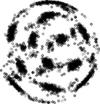You are here: Foswiki>Cosmo Web>CosmoTeaching20102011>MonographCosmo>MonographCosmoOpisSizeUniverse>MonographCosmoOpisSizeUniverse20112012 (04 Mar 2013, BoudRoukema)Edit Attach
<< Cosmo
- Oferta na rok a k a d e m i c k i 2 0 1 3 / 2 0 1 4 - Wyklad ogolnouniwersytecki - informacja
- Wydzial oferujacy wyklad:
- Nazwa przedmiotu:
- Erasmus/Socrates code
- Skrócony opis
- Nazwa przedmiotu w j. angielskim:
- Kod przedmiotu:
- Tytul/stopien oraz imie i nazwisko wykladowcy:
- Semestr (zimowy lub letni):
- Liczba godzin zajec:
- Liczba punktow ECTS:
- Jezyk wykladowy:
- Wymagania wstepne:
- Skrócony opis przedmiotu
- Pełny opis przedmiotu
- Wykaz literatury podstawowej i uzupelniajacej
- Efekty ksztalcenia
- Sposób zaliczenia:
- Metody i kryteria oceniania:
- Maksymalna liczba studentow:
Oferta na rok a k a d e m i c k i 2 0 1 3 / 2 0 1 4 - Wyklad ogolnouniwersytecki - informacja
Wydzial oferujacy wyklad:
- Wydzial Fizyki, Astronomii i Informatyki Stosowanej
Nazwa przedmiotu:
- Rozmiar Wszechświata
Erasmus/Socrates code
- Erasmus Code 13.7 Astronomy and Astrophysics
Skrócony opis
- Formal and intuitive introduction to the comoving spatial section of the Universe according to the Friedmann-Lemaitre-Robertson-Walker model, i.e. as a constant curvature 3-manifold, the various possible definitions of the "size" of the Universe according to model, and present observational estimates of these.
Nazwa przedmiotu w j. angielskim:
- The Size of the Universe
Kod przedmiotu:
- 0800-M-SOUV-DY
Tytul/stopien oraz imie i nazwisko wykladowcy:
- dr hab. Boudewijn Roukema
Semestr (zimowy lub letni):
- letni
Liczba godzin zajec:
- 30
Liczba punktow ECTS:
Bilans godzin i ECTS:*
"Nalezy wpisac informacje o zasadach przyporzadkowania punktow ECTS. Nalezy pamietac, ze1 punkt ECTS odpowiada 25-30 godzinom pracy studenta potrzebnej do osiagniecia zakladanych efektow uczenia sie. Suma punktow ECTS wynika z kalkulacji nakladu pracy studenta obejmujacej w szczegolnosci godziny kontaktowe (wyklady) oraz przygotowanie do zajec i do zaliczenia/egzaminu."- Zajecia wymagajace bezposredniego udzialu nauczyciela - wykład: 30
- Praca własna: 30
Jezyk wykladowy:
- angielski
Wymagania wstepne:
- required: elementary algebra; calculus; three-dimensional Euclidean geometry; Newtonian physics; recommended: basic astronomy; spherical astronomy; extragalactic observational astronomy; differential geometry; special and general relativity
Skrócony opis przedmiotu
- The shape of the Universe according to general relativity applied to astronomical observations.
Pełny opis przedmiotu
- przestrzeń jako 3-rozmaitości: krzywizna + topologia (space as a 3-manifold: curvature + topology)
- krzywizna i metryka, rola równań Einsteina-Hilberta w kosmologii wielkiego wybuchu ciepłego (curvature and the metric, the role of the Einstein-Hilbert equations in hot big bang cosmology)
- współrzędne współporuszające się, czynnik skali, lokalny parametry kosmologiczny, równanie Friedmana, równanie cieczy, równanie przyszpieszenia (comoving coordinates, scale factor, local cosmological parameters, Friedman equation, fluid equation, acceleration equation)
- wielospójne 3-rozmaitości, domen fundamentalny, przestrzeń widoczna (multiply connected 3-manifold, fundamental domain, apparent space)
- różne definicji odległość w modelach FLRW (various definitions of distance in FLRW models)
- różne definicji rozmiar przestrzeni współporuszające się, różnica między promieńiem krzywiznego a rozmiar rozmaitości (various definitions of the size of comoving space, difference between curvature radius and manifold size)
- podejścia empiryczne 3-wymiarowych (3-dimensional empirical approaches)
- podejścia empiryczne 2-wymiarowych: zasada okręg zidentyfikowane, kosmiczne promieniowanie tła (2-dimensional empirical approaches: identified circles principle, cosmic microwave backround)
- projekt badawczy aktualny (ongoing research project)
Wykaz literatury podstawowej i uzupelniajacej
podstawowa
- Liddle, A.R., 2000, Wprowadzenie do kosmologii współczesnej (Tyt. oryg.: Introduction to modern cosmology), Warszawa: Prószyński i S-ka
- Roukema, B.F., 2000, The Topology of the Universe, Bull.Astron.Soc.India 28 (2000) 483, arXiv:astro-ph/0010185
- Peebles, P.J.E., 1993, Principles of physical cosmology, Princeton: Princeton University Press
uzupelniajaca
- Najnowsze badania kosmologiczne: http://arxiv.org/list/astro-ph.CO/recent?show=200
Efekty ksztalcenia
"(wiedza, umiejetnosci, kompetencje spoleczne)"- knowledge: geometrical, topological, physical, algebraic and numerical familiarity with the present state of empirical knowledge about the whole of the observable Universe and common definitions of the size of the Universe
- knowledge: awareness of the role of open access to scientific empirical data and theoretical tools and FLOSS software for scientific analysis in modern scientific research (FLOSS: free/libre/open source software)
- skills: the ability to make elementary geometrical calculations for the main cosmological distance definitions (4 points in exam)
- social skills: experience in subjecting one's learning to potentially intensive peer review (1 point in exam)
Sposób zaliczenia:
- The exam consists of four points from html/latex/WIMS exercises which test the student using questions randomly chosen from an N-dimensional parameter space of questions where N varies from about 8 to 18, and one creative point offering the student the chance to subject his/her learning to potentially intensive peer review.
Metody i kryteria oceniania:
- In the main part of the exam, the student needs to correctly answer open format questions which are each chosen uniquely for that individual student. Partial credit is given for partially correct answers. Students who wish to try to answer the questions again are given newly chosen, unique questions, for as long as they wish to keep trying. Numerical answers are required to be correct to a reasonable precision, depending on the particular question family. The creative point is open to peer review by the lecturer, by other students and by other members of the research institute.
Maksymalna liczba studentow:
- 10
Edit | Attach | Print version | History: r4 < r3 < r2 < r1 | Backlinks | View wiki text | More topic actions
Topic revision: r4 - 04 Mar 2013, BoudRoukema
 Copyright © by the contributing authors. All material on this collaboration platform is the property of the contributing authors.
Copyright © by the contributing authors. All material on this collaboration platform is the property of the contributing authors. Ideas, requests, problems regarding Foswiki? Send feedback
